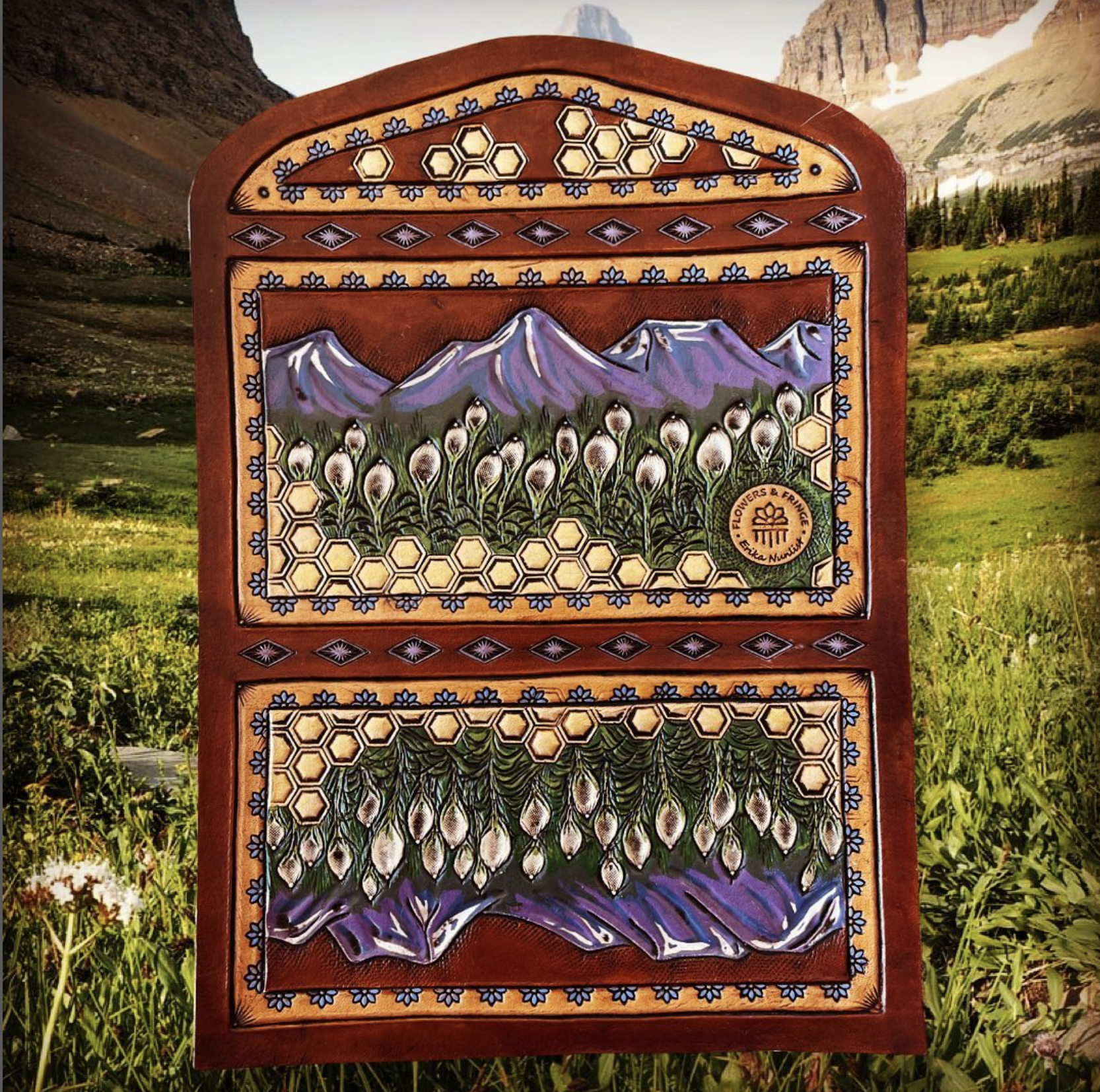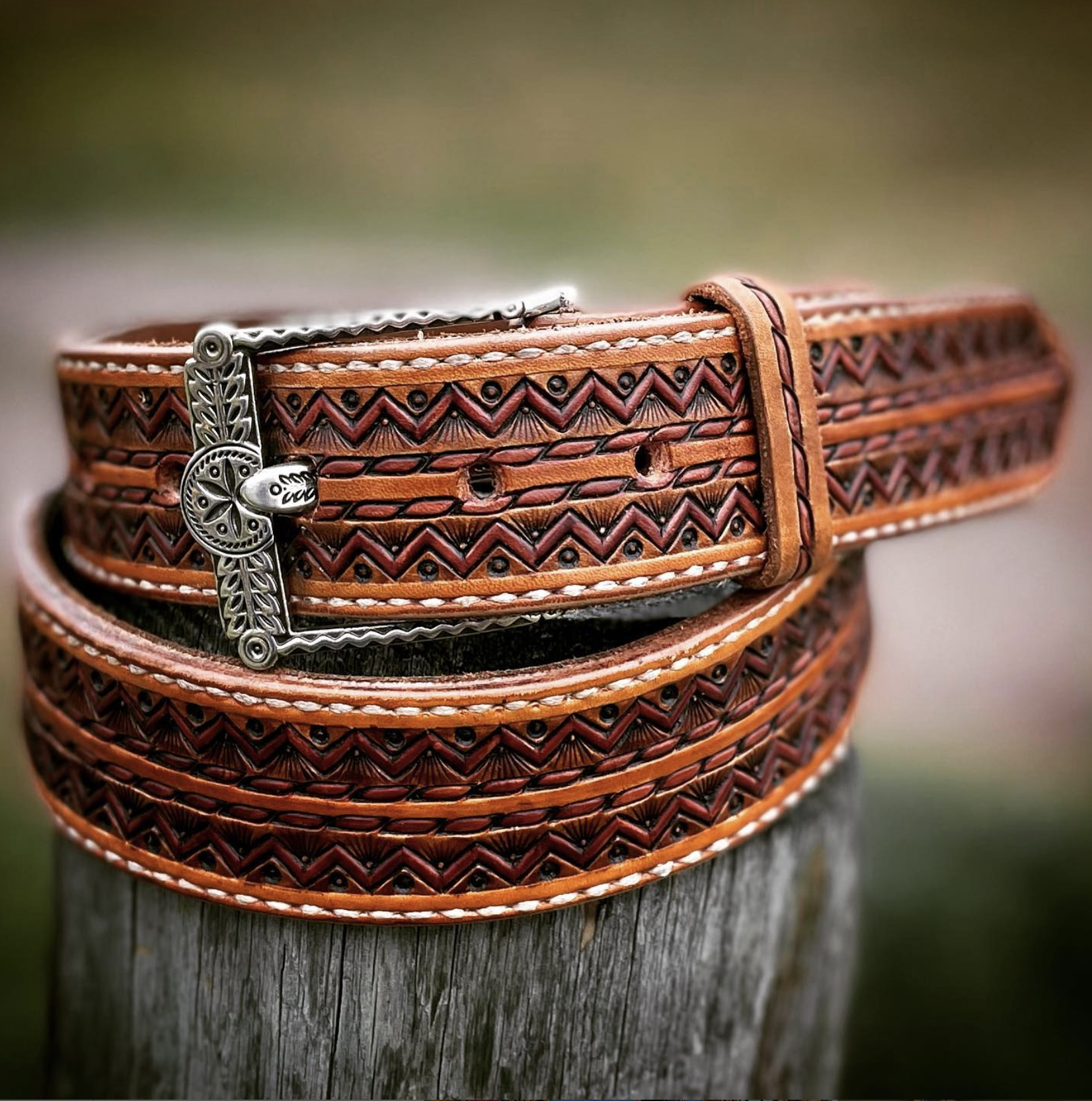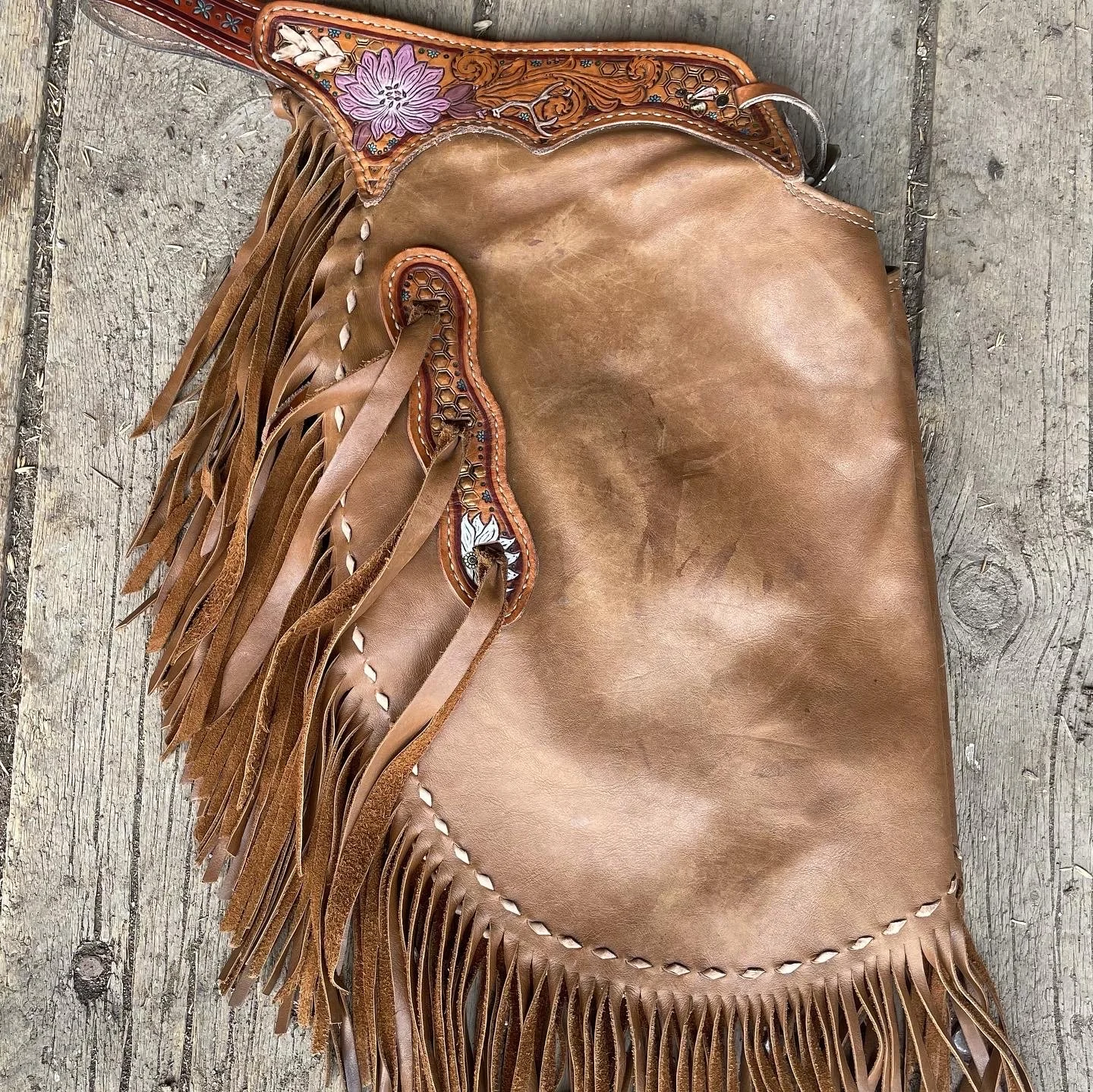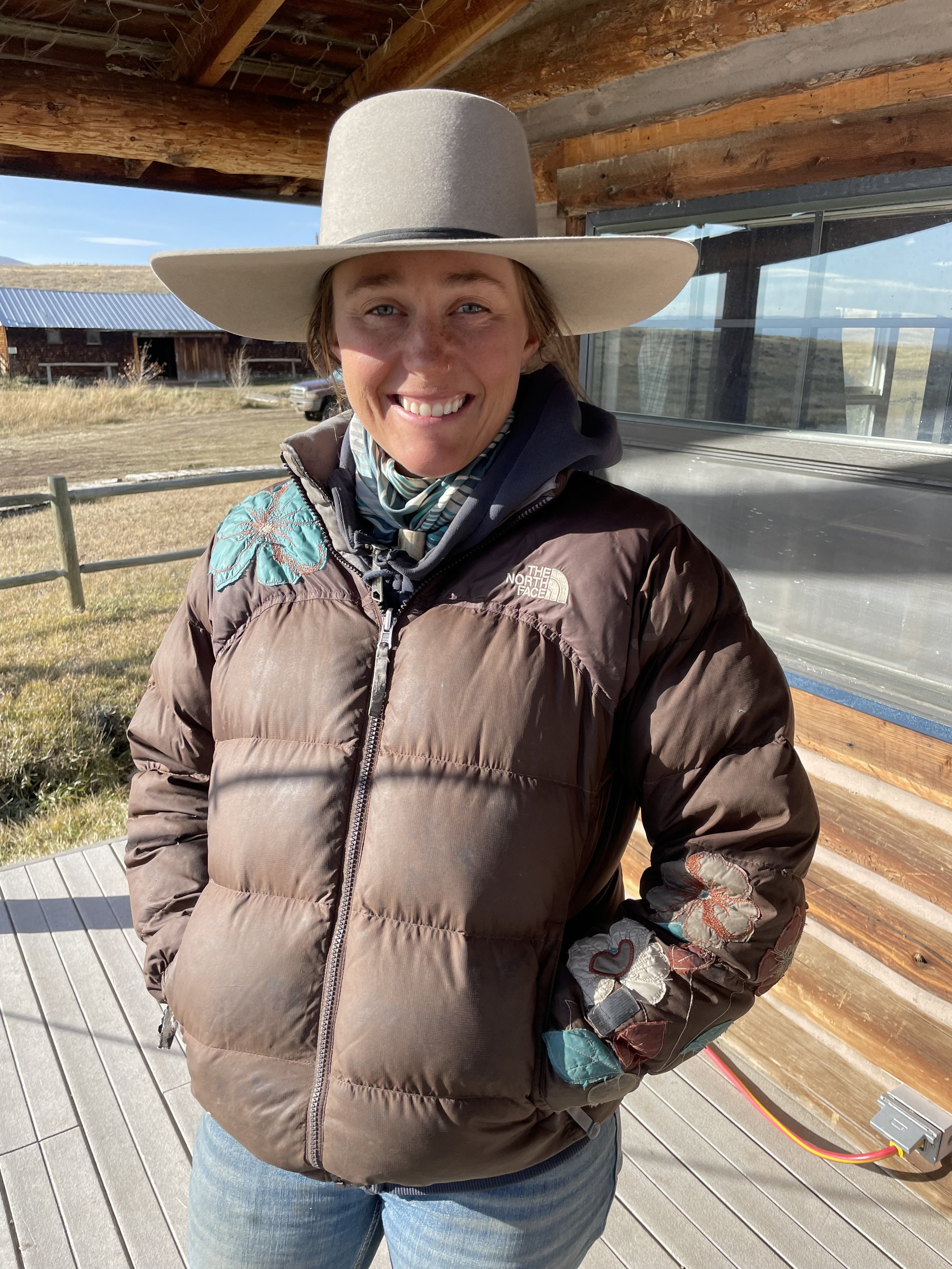
Erika Nunlist
Meet the Artist Behind
Flowers & Fringe
Erika Nunlist is the creative behind the one-woman leather-working brand Flowers and Fringe. A 4th generation Montanan, she was born in Bozeman and raised in Northwest Montana, where she spent every weekend camping, hiking, and exploring the region’s many landscapes. Erika is now an artist and a range rider in the Centennial Valley.
After completing a Bachelor’s in Conservation and Ecology with a minor in GIS from Montana State University, Erika began working seasonally as a range rider for the Centennial Valley Association (CVA). She returned to MSU to earn her Master’s in Animal and Range Sciences before moving out to the Centennial Valley full-time in 2019 with her partner, James. Erika and James live and work from a remote ranch that the Nature Conservancy owns and manages for conservation and cattle grazing. Here, the closest grocery store is a 1.5-hour drive, and during the winter months, getting there is accessible only by a 27-mile snowmobile ride. During the springtime mud season, reaching the nearest town can be nearly impossible.
While living so remotely offers its unique challenges, it is where Erika feels most herself, with flora and fauna providing endless inspiration for her creative endeavors. “We really do love it out here,” she says. “It’s a wild and beautiful place, and it’s even more pristine and peaceful in the wintertime. I have no intentions of leaving here anytime soon.”
During the summer months, Erika’s work as a range rider keeps her busy. “We work with six different producers in this Valley,” she says. “We’re there to be an extra set of eyes on the landscape to help reduce depredations and unconfirmed losses. We check in on cattle health, infrastructure issues, wildlife and predator movement, investigate any carcasses we find, and keep a record of all of it. We also communicate all of our observations with the ranchers and larger community with the overarching goal of preserving the local landscape and community as it is today for future generations”
When she’s not on horseback checking cattle or tracking wildlife, Erika indulges her creative side, a complement to the physicality of her work on the ranch and in the Valley. Since her high school days, she has experimented with a wide variety of art mediums. In the fall of 2020, her parents gifted her a leather tooling kit. “I liked the idea of a practical art form,” she says. The kit came with the tools to create a bookmark, coaster, and a few other small projects.
“They were basic projects, but I really loved creating something pretty that was also functional and lasting.”
April 15th, 2023



Even as she was finishing the introductory projects that came with her first leather tooling kit, Erika had decided that she wanted to make chaps. Later that winter, after “endless YouTubing,” she designed, cut, sewed, and tooled herself a pair. “It all snowballed from there,” she says.
Erika’s process starts with pencil and paper. She sketches out the designs she conjures up in her head, pulling inspiration from the vast landscapes, flowers, plants, and wildlife of the West. Then she selects the right piece of leather, cuts out the shapes she needs for a particular project, and gets to tooling. To tool the leather, she first gets it damp and then and then uses numerous stamps and a specialized mallet to imprint her designs into the leather. From there, she lets it dry, oils it, paints and antiques it, and finishes by applying a protective top coat. It’s a long process with many phases and a lot of waiting for the leather to dry in between.
“I really enjoy all of the different steps to leatherworking, and each project is challenging in its own way,” she says. “Sculpting, carving, painting, drawing, sewing, understanding the leather and how to take care of it—I’m always doing something new, and it keeps me engaged.”
While she draws many visual concepts from the natural world in her work, she also finds style inspiration from other artists with different tooling techniques. “Everybody tools a little differently,” she says. “I love studying artists and what makes them unique. I’m still figuring out my own style and technique.”
Erika works from the ranch house she shares with her fiancé, two dogs, and a couple of “barn” cats that have won her over. Slowly and subtly, she has taken over the kitchen, living room, and even the bunkhouse, converting the living quarters into a makeshift studio for her budding business, Flowers and Fringe.
“I now have three sewing machines, and there are piles of leather pieces around the house,” she says. “I’ve only just scratched the surface of what I can do with leather, and it feels like the sky’s the limit.”



